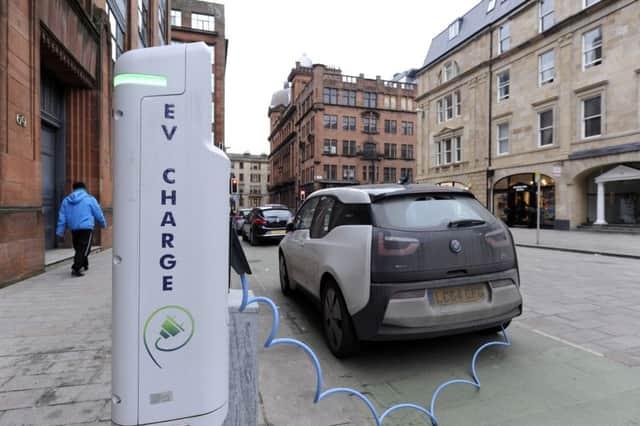How Scotland can prepare for the electric car revolution


On a stationary plane at Glasgow Airport last month, two hours past the intended departure time, a weary voice came over the loud speaker.
The pilot explained that, due to low temperatures, we needed to undergo a de-icing procedure - but there was a problem. The de-icing truck ran on diesel, and the diesel had done what diesel does in extreme cold and froze.
Advertisement
Hide AdAdvertisement
Hide AdElectric vehicles (EVs) don’t have this problem and can operate in low temperatures happily, as evidenced by their increasing popularity in Scandanavia. Norway tops the global charts of EVs per capita, and nearly 40% of new cars bought by our North Sea neighbours last year were electric.
Norway hopes to have emission-free road transport by 2025, and the rest of the world would like to catch up. Governments everywhere have announced aspirations in this regard.
The UK and France want sales of petroleum fueled vehicles banned by 2040. India, notorious for its congestion and air pollution challenges, revealed an ambitious aim for all new cars to be electric by 2030. Austria, China, Denmark, Germany, Ireland, Japan and the Netherlands have set dates and targets, as have some of the individual states in the USA.
Here in Scotland, we’re hoping to phase out sales of all fossil fuel-burning cars by 2032. Working as I do in electric transport, I wholeheartedly support the Scottish target.
Today, road transport alone accounts for a hefty 20% of total carbon emissions, so reducing this category of pollution would make a big difference overall, as well as spare our citizens the deadly effects of diesel particulates in the air.
But I also know that ditching petroleum fuels in under two decades will be hugely challenging. These fuels are energy-dense and relatively inexpensive, making the vehicles we use today efficient, convenient and cheap. And critically, all our existing road infrastructure has been designed around these internal combustion engine (ICE) cars.
It has many people asking: do any of the world’s governments have a snowball’s chance in hell of doing away with ICE vehicles in favour of battery-operated alternatives?
It depends on whether infrastructure changes are adopted that could enhance the entire sector. Global investment exceeded $2.2 billion last year on creating and developing electric vehicles. Yet just a fraction of that is being put into the infrastructure that will facilitate growth in take-up. While car manufacturers are developing their suite of electric and autonomous vehicles, we must look at how the road system can play its part.
Advertisement
Hide AdAdvertisement
Hide AdAt TEV (Tracked Electric Vehicles) Project we’re working with Newcastle University on something simple yet radical - roads that can charge cars while they drive. TEV is a design for a motorway that will power electric vehicles as they move, and provides an environment that allows them to operate driverless technology in maximum efficiency and safety.
Electric cars will drive on TEV’s segregated lanes under automatic control, allowing vehicles to be grouped closely together. Grouping cars together reduces energy consumption – and it adds to the capacity of the road, making it a ‘high bandwidth’ highway lane.
At present, EVs require stationary charging. If everyone who drives goes electric, it will be necessary to figure out how to handle and prioritise all the vehicles that will need to charge, particularly in high density areas.
Dynamic charging will transform our ability to use EVs, making them more practical than ever. It even allows EVs to be used more easily for car sharing as they can be in almost continuous use. This holistic approach, which uses existing technologies, offers technological, social, physiological and economic benefits.
It will be a difficult journey for all governments towards emission-free transport, but with TEV, Scotland may have the best road to get there. We already have clean energy, a history of innovations that have changed the way we live and an appetite for positive culture change. If anyone can de-ICE, it’s Scotland.
Caroline Jones Carrick is director of the TEV Project, a Scottish-based non-profit road technology initiative
